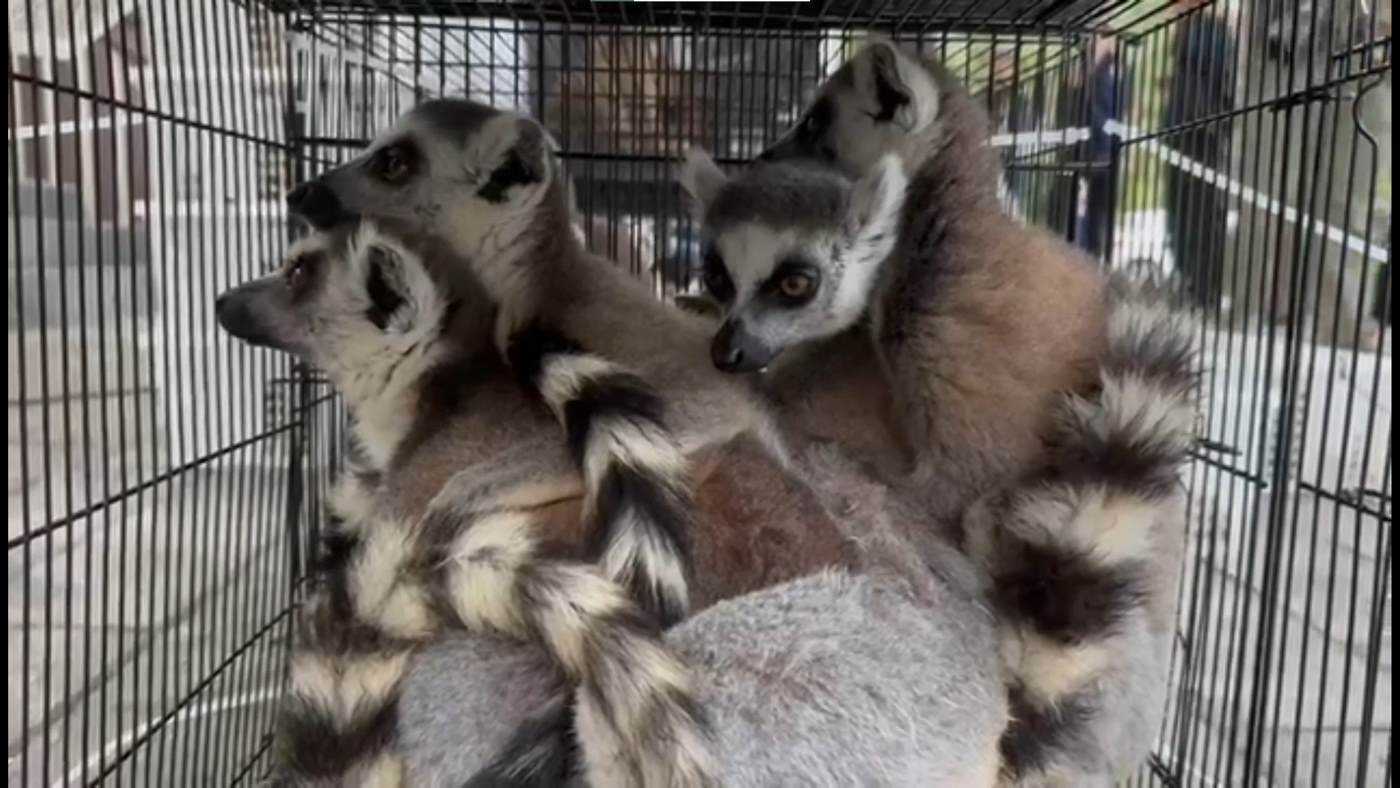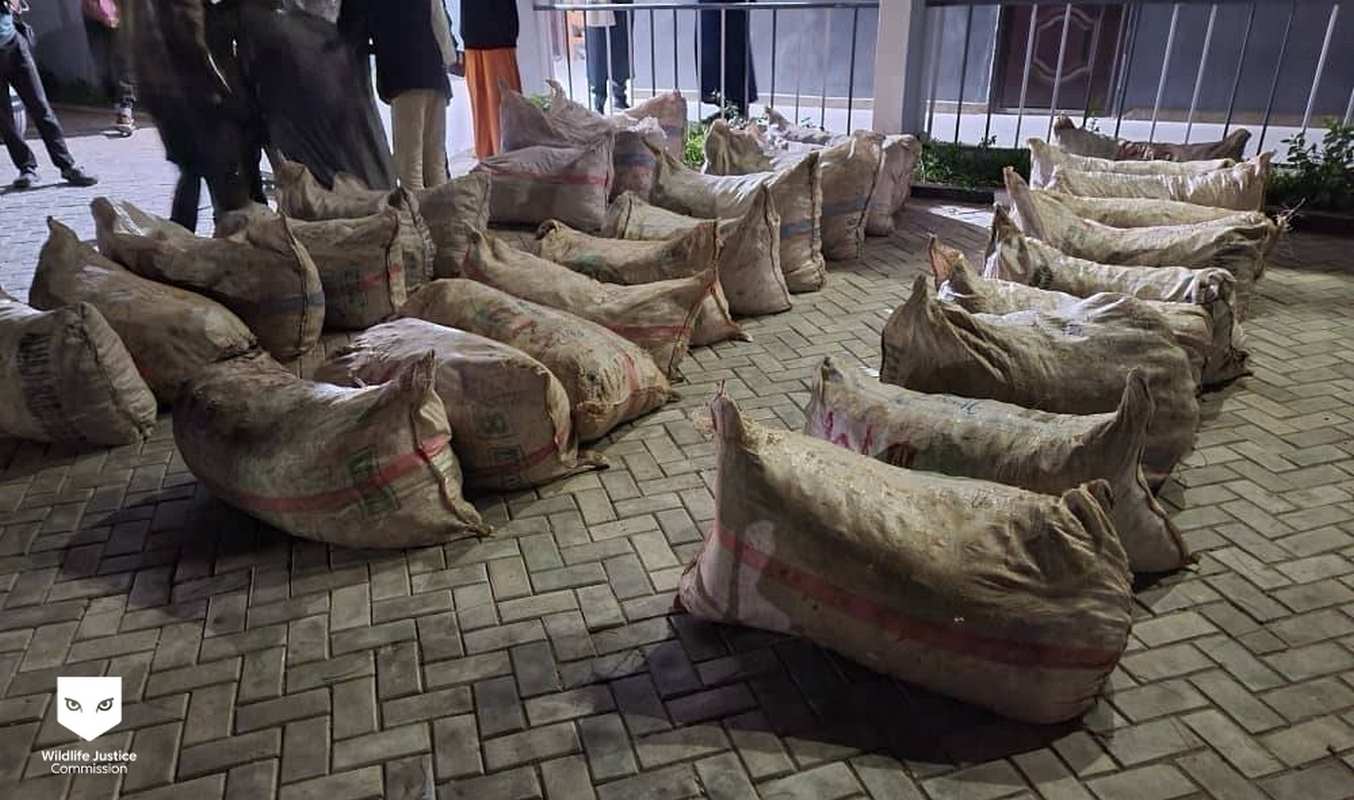Authorities in Indonesia have rescued more than 6,500 wild birds being trafficked from the island of Sumatra and destined for Java, in what’s been hailed as the single largest seizure of its kind in the country’s modern history.
Quarantine authorities at the port of Bakauheni in Lampung province, the main crossing point from Sumatra to Java, worked with NGO FLIGHT to intercept a truck carrying the birds on Oct. 15. On board, they found 6,514 birds crammed into 216 boxes, mostly tightly packed and taped. They included 257 individuals from species protected under Indonesian law.
Kanitha Krishnasamy, Southeast Asia director for wildlife trade watchdog TRAFFIC, said in a news release that her organization “has long monitored the caged bird trade in Indonesia and massive seizures like this one continue to alarm us.”
Experts have long raised alarms that the bird trade, which heavily targets native species, is causing rapid declines in the numbers of various species in the wild, which, along with habitat loss, could drive many toward extinction.
“It’s simply not sustainable and this level of extraction of unprotected species means we have little means to understand its impact on species until it’s too late,” Krishnasamy said.
Keeping caged songbirds is a popular tradition in Indonesia, particularly in ethnic Javanese households. The birds are often entered into birdsong competitions, with champion birds selling for hundreds of thousands of dollars.
Among the birds rescued in the recent seizure, all of which survived, according to FLIGHT, were some of the world’s most threatened species, such as the critically endangered Javan green magpie (Cissa thalassina). There were also thousands of individuals from unprotected species, such as the bar-winged prinia (Prinia familiaris), and a variety of white-eyes (genus Zosterops) and tailorbirds (genus Orthotomus).
Repeated seizures in Lampung province over the years are partly due to its strategic location on the southernmost tip of Sumatra, making it the main hub for ship and truck traffic to Java, Indonesia’s most populous island. FLIGHT reported that from 2021 to 2023, authorities seized a total of 121,689 Sumatran songbirds, mostly prinias and tailorbirds. About 80% of those seizures occurred in Lampung. The group said many of the birds found during seizures were already dead, having traveled vast distances from their natural habitats as far as the northernmost tip of Sumatra.
“Lampung is just a transit point and an exit point when they want to cross over to Java,” Marison Guciano, FLIGHT’s executive director, told Mongabay by email. Smuggling routes fan out beyond Indonesia, connecting to 18 countries, including the Philippines, a key destination for smuggled Indonesian parrots and cockatoos.
The recorded busts likely only scratch the surface of Indonesia’s illegal songbird trade, experts say.
“Authorities have foiled the smuggling of more than 200,000 Sumatran songbirds to Java in the past five years. But we believe this is a small number compared to the number of Sumatran birds successfully smuggled into Java,” Marison said.




‘Ramp up efforts vs trafficking networks’
Authorities have arrested two people in connection with the Oct. 15 trafficking attempt, and are still working to apprehend the sender of the cargo, whose name they know but haven’t yet published. The suspects have been charged with wildlife trafficking, for which they could face up to five years in prison, and quarantine violations, which carry a maximum sentence of two years and fines of 2 billion rupiah ($127,000).
FLIGHT said all 6,514 rescued birds were released into suitable wild habitats after being cleared as healthy by a veterinarian from the Lampung quarantine authority.
Krishnasamy praised the enforcement action, while also urging authorities to “not stop here but to look at better regulating and controlling the trade” in wild birds.
“The networks operating behind the scenes from point of collection at source, right through to the end markets also need further investigations if we are to stop uncontrolled harvest and trade,” she said.
Despite the recent seizure, Marison said the Indonesian government hasn’t prioritized efforts to combat the illegal songbird trade, giving birds less attention than mammals such as orangutans and tigers. (The country’s former president, Joko Widodo, who left office in October after a decade in power, is himself an avid songbird collector, and once offered to buy a competition-winning bird for 2 billion rupiah.)
Marison said current measures focus more on preventing smuggling at seaports rather than addressing issues closer to the source. He added that beyond the centuries-old Javanese tradition of keeping songbirds, the illegal trade is also driven by corrupt local officials issuing breeding and distribution licenses, which unscrupulous traders exploit by taking birds from the wild and passing them off as captive-bred specimens.
“If the illegal trade in songbirds is still not considered a serious threat and is still handled as usual, I predict that the populations of many songbird species will decline drastically, even disappearing from the wild,” Marison said.
Citations:
Harris, J. B. C., Tingley, M. W., Hua, F., Yong, D. L., Adeney, J. M., Lee, T. M., … Wilcove, D. S. (2016). Measuring the impact of the pet trade on Indonesian birds. Conservation Biology, 31(2), 394-405. doi:10.1111/cobi.12729
Krishna, V. V., Darras, K., Grass, I., Mulyani, Y. A., Prawiradilaga, D. M., Tscharntke, T., & Qaim, M. (2019). Wildlife trade and consumer preference for species rarity: An examination of caged-bird markets in Sumatra. Environment and Development Economics, 24(04), 339-360. doi:10.1017/s1355770x19000081
Jepson, P., & Ladle, R. J. (2005). Bird-keeping in Indonesia: Conservation impacts and the potential for substitution-based conservation responses. Oryx, 39(04), 442. doi:10.1017/s0030605305001110
Indraswari, K., Friedman, R. S., Noske, R., Shepherd, C. R., Biggs, D., Susilawati, C., & Wilson, C. (2020). It’s in the news: Characterising Indonesia’s wild bird trade network from media-reported seizure incidents. Biological Conservation, 243, 108431. doi:10.1016/j.biocon.2020.108431
This article by Keith Anthony S. Fabro was first published by Mongabay.com on 14 November 2024. Lead Image: A bar-winged prinia (Prinia familiaris). Image by Lip Kee via Flickr (CC BY-SA 2.0).
What you can do
Help to save wildlife by donating as little as $1 – It only takes a minute.
Focusing on Wildlife supports approved wildlife conservation organizations, which spend at least 80 percent of the money they raise on actual fieldwork, rather than administration and fundraising.</







Leave a Reply